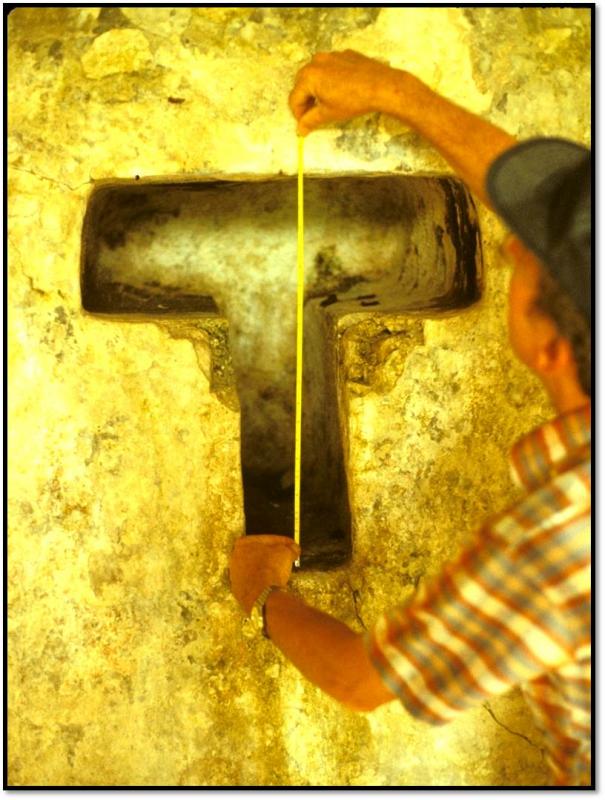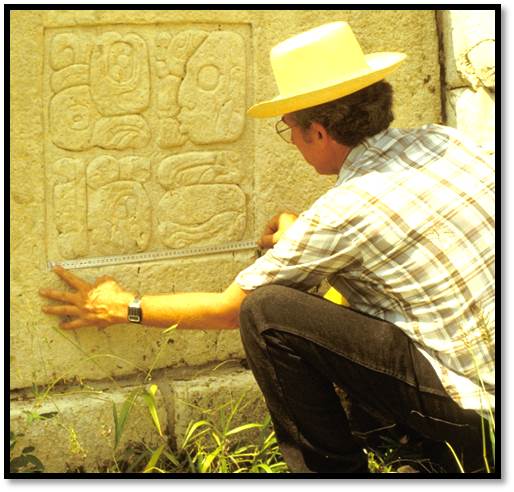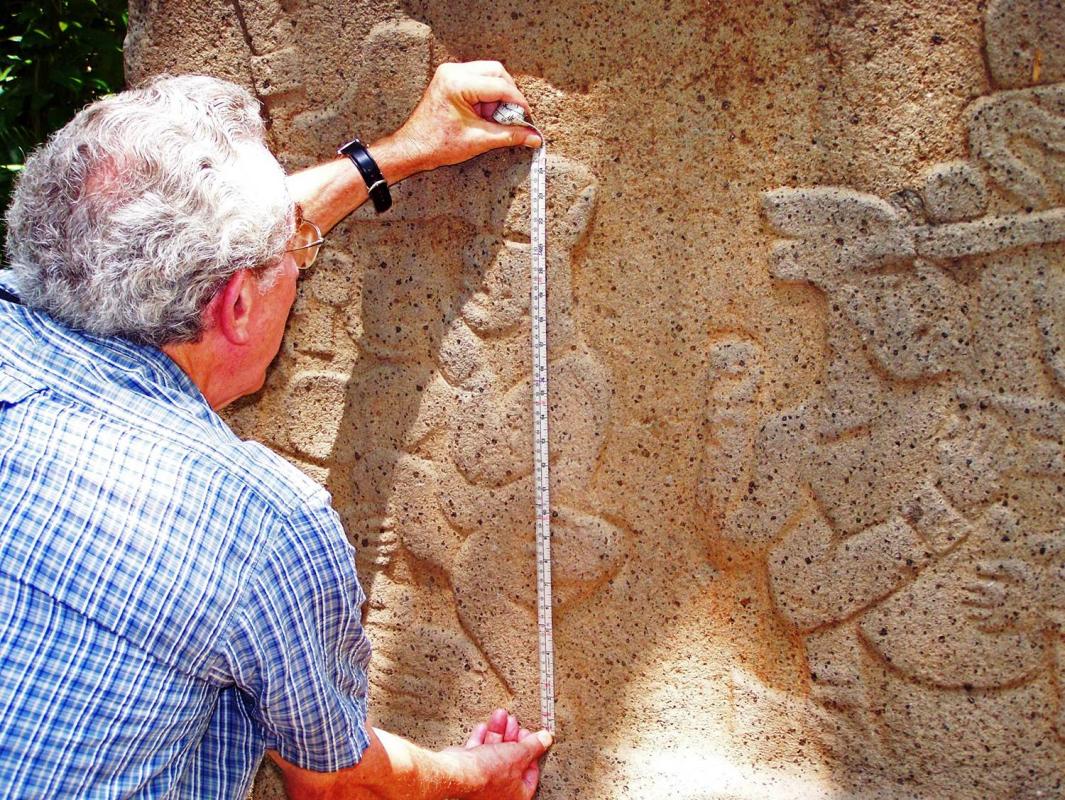Palenque Ruins exhibit the Mesoamerican Standard Measure and Geometric Planning
Palenque Ruins exhibit the Mesoamerican Standard
Measure and Geometric Planning
by V. Garth Norman
Pyramid of Pacal

The excellent precision drawings of Palenque panels by Merle Green Robertson, Linda Schele, and Alfred Maudslay, made the task of checking geometric structure in the five major Palenque slab sculptures a truly rewarding exercise. The Palenque panels express an unsurpassed vitality for utilizing the geometric mandala frame with great variety of artistic creativity. The consistency of their golden mandala formats seem self evident.
Divisions in the Palace hieroglyphic panel (above) were obviously dictated by the underlying Golden Mandala format. The center point was interestingly reserved for reference to the ancestral King Pacal in the text.
Centers on all carvings are easily located between base and side mandala border references. The open top (except Sarcaphogus lid below), seems to refer to the unbound sky as expressed on Izapa sculptures in upward sloping sky panels. The composition of the Foliated Cross panel to my Golden Mandala reconstruction (as with other Palenque panels) appears self evident.
The perfection of the Golden Mandala composition is reflected in mirror images and glyph columns on opposite sides of sculptures that conform to geometry lines. The composition and theme of Pacal’s Sarcaphogus Lid carving are distinctly rooted in the Izapan tradition, best manifest on Izapa Stela 5. This Palenque carving is unsurpassed in Mesoamerican art for its beauty in expressing immortality. The geometry dramatizes that theme. In addition to the conch, Pacal is being lifted by the long-lipped masks beneath his foot and in back of his head. Pacal is in the midst of flowering through the action of the sun (Kin glyph) on the crown of the earth monster. He sits directly on a budding blossom. Death is evident in the Cimi glyph at the right, but life out of death is manifested in the tri-partite leaf plant projecting from it. As with most dramatic death scenes at Izapa (Stelae 12 and 50), the focus of death here is unmistabably toward a subsequent heavenly ascension.
Measurements of antiquities at Palenque

Further evidence is added through measurements of Palenque sculpture (Classic Maya) during a 1986 field study and from excellent scaled drawings of Merle Greene Robertson. LIfe size stuccoed Maya figures on temple wall panels and pillars have hands and fingers curved in gestures for the full forearm length to be measured along the back of the hand and around the fingers. Regardless of the different gestures, forearms of four out of the six intact figures in the Palace are the same length–49.5 cm. RB (Royal Babylon Cubit). An added surprise came in finding that intact feet on these figures are consistently half the arm length (24.75 cm.) indicating that the foot acts in conjunction with the arm as a standard measure. A double RB Cubit is found on forearms of the carved giants in the north court of the Palace, and a smaller carved figure in that court measures a full RB Cubit – 49.5 cm.

Other measures reveal the RB Cubit was used in Palenque
.png)
Palenque figure's foot measures half of arm's 49.5 cm. Royal Babylonian Cubit
Some T-shaped windows in the Palace are exactly 1 RB Cubit high and 1 RB cubit wide. Others that differ may have been the work of less skilled masons. Four out of six hieroglyphic panels in the west wall of the Palace’s north court are one RB Cubit square.
The use of perfect Mesopotamian and Egyptian standard measures in Mesoamerica is convincing evidence of transoceanic diffusion


